低温等离子体放电的PIC模拟与VORPAL软件_王虹宇
- 格式:pdf
- 大小:57.72 KB
- 文档页数:1
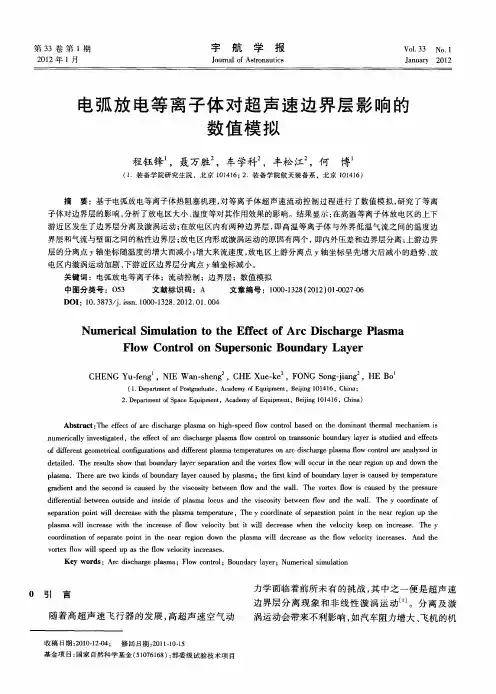
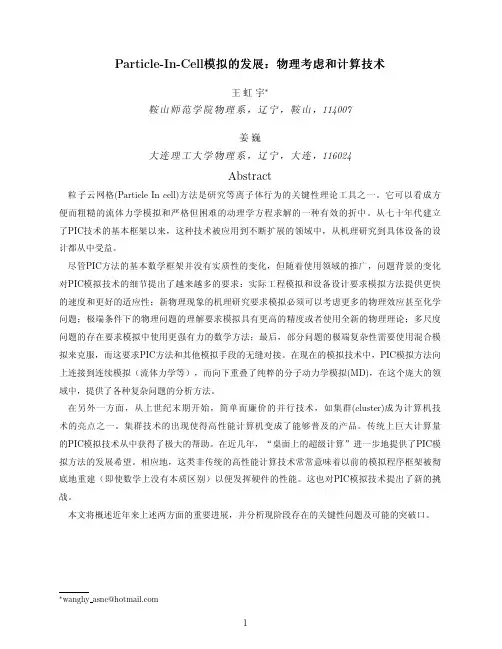
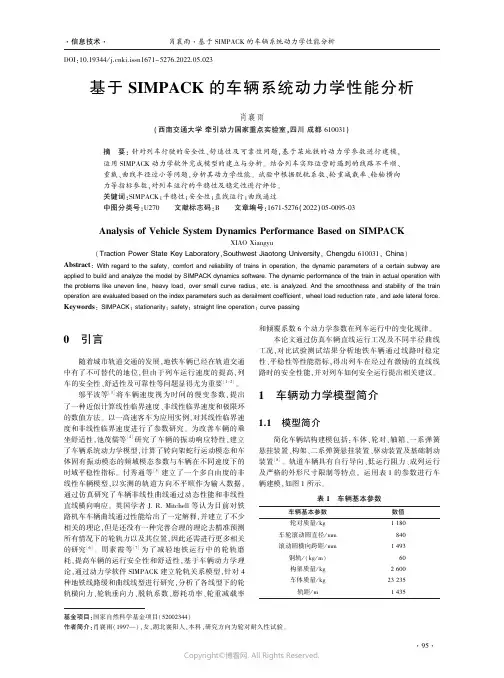
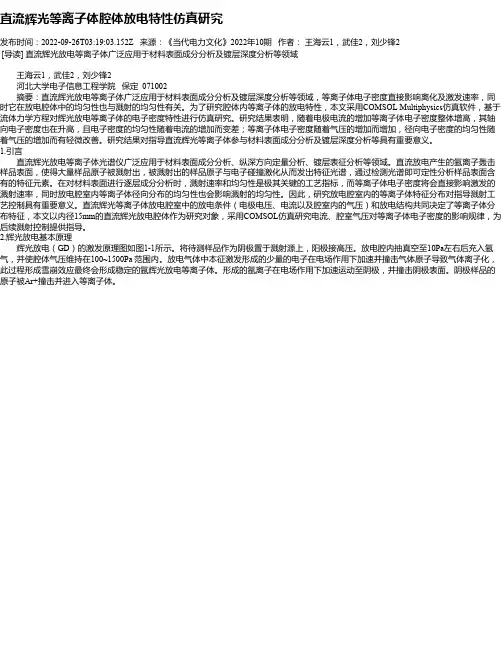
直流辉光等离子体腔体放电特性仿真研究发布时间:2022-09-26T03:19:03.152Z 来源:《当代电力文化》2022年10期作者:王海云1,武佳2,刘少锋2 [导读] 直流辉光放电等离子体广泛应用于材料表面成分分析及镀层深度分析等领域王海云1,武佳2,刘少锋2河北大学电子信息工程学院保定 071002摘要:直流辉光放电等离子体广泛应用于材料表面成分分析及镀层深度分析等领域,等离子体电子密度直接影响离化及激发速率,同时它在放电腔体中的均匀性也与溅射的均匀性有关。
为了研究腔体内等离子体的放电特性,本文采用COMSOL Multiphysics仿真软件,基于流体力学方程对辉光放电等离子体的电子密度特性进行仿真研究。
研究结果表明,随着电极电流的增加等离子体电子密度整体增高,其轴向电子密度也在升高,且电子密度的均匀性随着电流的增加而变差;等离子体电子密度随着气压的增加而增加,径向电子密度的均匀性随着气压的增加而有轻微改善。
研究结果对指导直流辉光等离子体参与材料表面成分分析及镀层深度分析等具有重要意义。
1.引言直流辉光放电等离子体光谱仪广泛应用于材料表面成分分析、纵深方向定量分析、镀层表征分析等领域。
直流放电产生的氩离子轰击样品表面,使得大量样品原子被溅射出,被溅射出的样品原子与电子碰撞激化从而发出特征光谱,通过检测光谱即可定性分析样品表面含有的特征元素。
在对材料表面进行逐层成分分析时,溅射速率和均匀性是极其关键的工艺指标,而等离子体电子密度将会直接影响激发的溅射速率,同时放电腔室内等离子体径向分布的均匀性也会影响溅射的均匀性。
因此,研究放电腔室内的等离子体特征分布对指导溅射工艺控制具有重要意义。
直流辉光等离子体放电腔室中的放电条件(电极电压、电流以及腔室内的气压)和放电结构共同决定了等离子体分布特征,本文以内径15mm的直流辉光放电腔体作为研究对象,采用COMSOL仿真研究电流、腔室气压对等离子体电子密度的影响规律,为后续溅射控制提供指导。
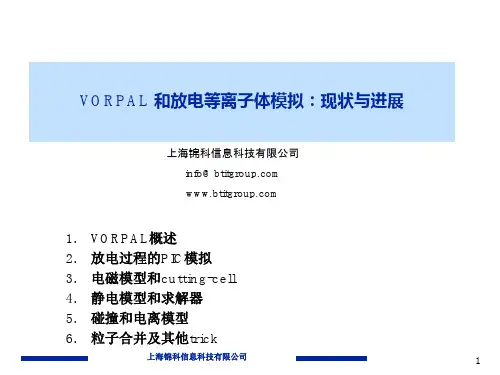

·等离子体及应用技术·不同电极结构下大气压Ar 等离子体射流的流体模拟研究*蒋园园, 王艳辉, 高彩慧, 王德真(大连理工大学 三束材料改性教育部重点实验室,辽宁 大连 116024)摘 要: 采用二维轴对称流体模型对比研究了3种不同电极结构下大气压Ar 等离子体射流的基本特性。
第一种是带绝缘介质的针电极结构(电场方向和气体流方向平行),第二种是在第一种电极结构的介质管外增加一个垂直气流方向的接地环电极,第三种是不带绝缘介质的裸针电极结构。
研究结果表明,接地环电极的引入对介质管内外的射流传播影响不同。
在介质管内,接地环电极使管内表面附近的径向电场增加,电子密度升高,射流传播速度加快,但对中心轴附近的电场和电子密度影响很小;然而在介质管外,接地环电极的引入导致轴向和径向电场均减小,从而引起射流的传播长度减小,射流通道径向收缩。
通过带绝缘介质的针电极和裸针电极结构的对比研究发现,保持其他条件不变,去掉包裹在针电极上的介质后,由于等离子体电势升高,电场增加,射流的传播长度几乎增加一倍,峰值电子密度增加近一个数量级,而且在整个射流通道内电子密度都保持相对高的值。
此外,对3种电极结构下的主要活性粒子的产生和输运进行了比较研究。
关键词: 大气压Ar 等离子体射流; 电极结构; 二维模拟; 活性粒子中图分类号: O531 文献标志码: A doi : 10.11884/HPLPB202133.210148Numerical study of atmospheric pressure Ar plasma jetsunder different electrode structuresJiang Yuanyuan , Wang Yanhui , Gao Caihui , Wang Dezhen(Key Laboratory of Materials Modification by Laser , Ion and Electron Beams (Ministry of Education ),School of Physics , Dalian University of Technology , Dalian 116024, China )Abstract : In this paper, the basic properties of the atmospheric pressure Ar plasma jet with three different electrode structures are comparatively studied using a two-dimensional axisymmetric fluid model. The results show that the introduction of the grounded ring electrode affects the jet propagation both inside and outside the dielectric tube. Inside the dielectric tube, the grounded ring electrode increases the radial electric field near the inner surface of the tube, leading to the increase of the electron density and jet propagation length. However, it has a slight effect on the electric field and electron density near the central axis. Outside the dielectric tube, the introduction of the grounded ring electrode results in the reduction of the electric field both in axial and radial directions. This inevitably causes the decrease of the jet propagation length and a contraction of the jet channel radius. For the bare needle electrode structure, the removal of the medium wrapped around the needle electrode increases the electric field due to the elevated plasma potential. This makes the increase of the jet propagation length. The peak electron density in the jet channel increases about one order of magnitude. Meanwhile, the electron density in the whole channel is relatively higher in the bare needle electrode structure. In addition, the production and transport of the main active particles under the three electrode structures are comparatively studied.Key words : atmospheric pressure Ar plasma jet ; electrode structure ; 2D simulation ; reactive particle* 收稿日期:2021-04-16; 修订日期:2021-05-25基金项目:国家自然科学基金项目(11775043,11675095,11505020)作者简介:蒋园园(1991—),女,博士研究生,主要从事大气压等离子体射流的数值模拟研究。
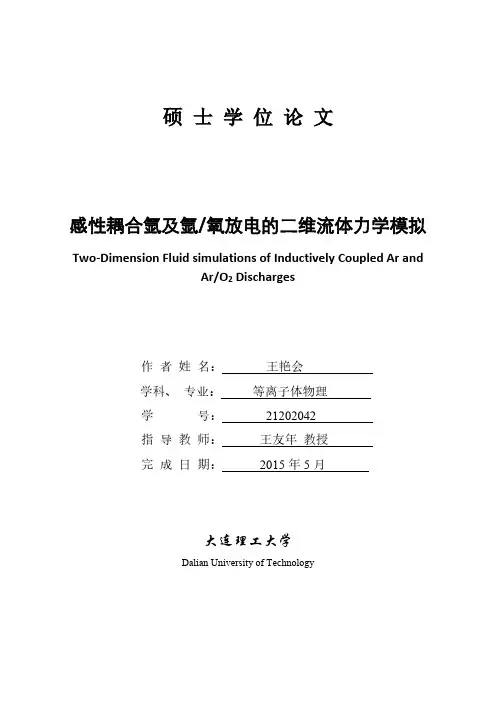
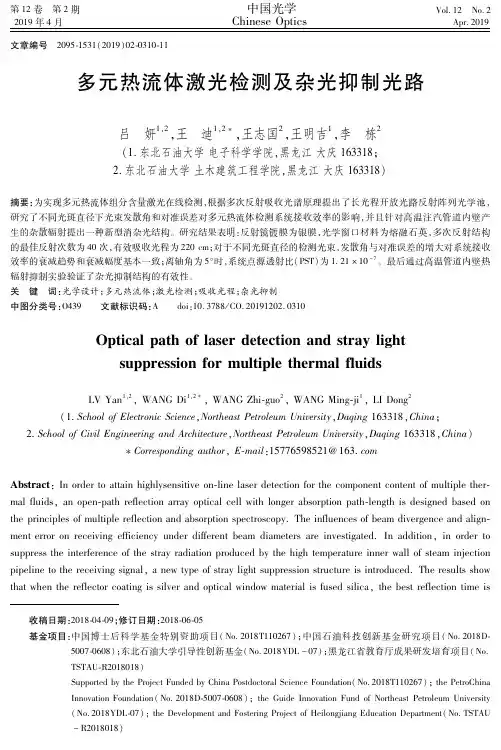
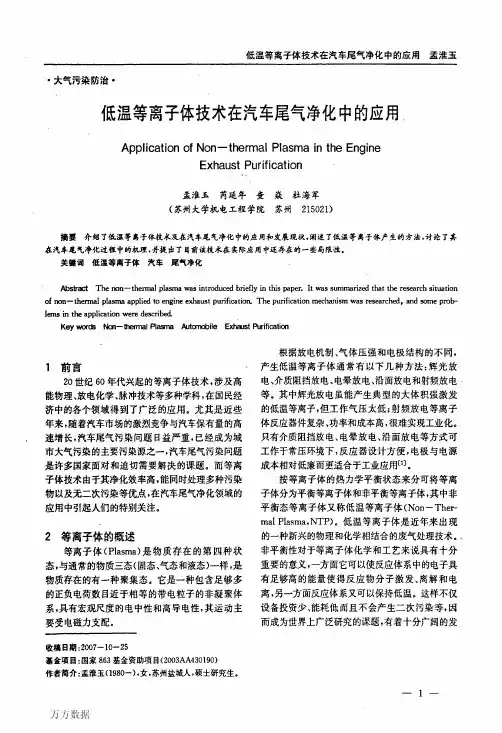
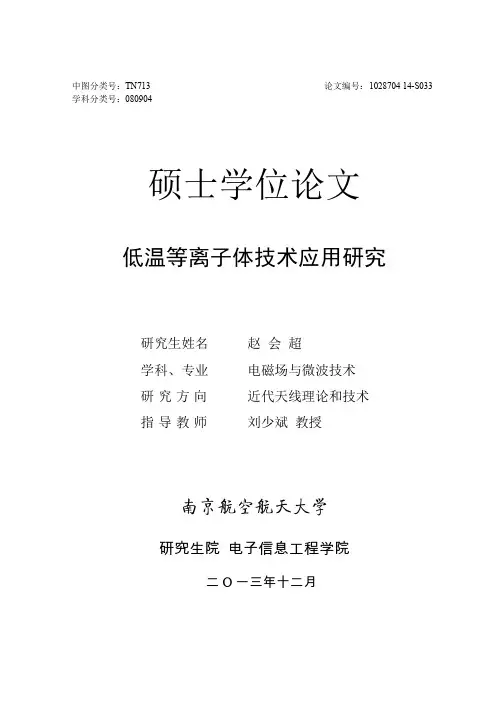
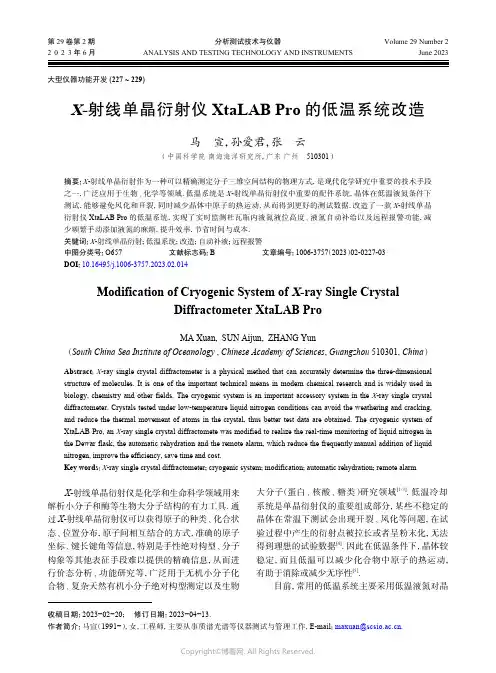
大型仪器功能开发 (227 ~ 229)X -射线单晶衍射仪XtaLAB Pro 的低温系统改造马 宣,孙爱君,张 云(中国科学院 南海海洋研究所,广东 广州 510301)摘要:X -射线单晶衍射作为一种可以精确测定分子三维空间结构的物理方式,是现代化学研究中重要的技术手段之一,广泛应用于生物、化学等领域. 低温系统是X -射线单晶衍射仪中重要的配件系统,晶体在低温液氮条件下测试,能够避免风化和开裂,同时减少晶体中原子的热运动,从而得到更好的测试数据. 改造了一款X -射线单晶衍射仪XtaLAB Pro 的低温系统,实现了实时监测杜瓦瓶内液氮液位高度、液氮自动补给以及远程报警功能,减少频繁手动添加液氮的麻烦,提升效率,节省时间与成本.关键词:X -射线单晶衍射;低温系统;改造;自动补液;远程报警中图分类号:O657 文献标志码:B 文章编号:1006-3757(2023)02-0227-03DOI :10.16495/j.1006-3757.2023.02.014Modification of Cryogenic System of X -ray Single CrystalDiffractometer XtaLAB ProMA Xuan , SUN Aijun , ZHANG Yun(South China Sea Institute of Oceanology , Chinese Academy of Sciences , Guangzhou 510301, China )Abstract :X -ray single crystal diffractometer is a physical method that can accurately determine the three-dimensional structure of molecules. It is one of the important technical means in modern chemical research and is widely used in biology, chemistry and other fields. The cryogenic system is an important accessory system in the X -ray single crystal diffractometer. Crystals tested under low-temperature liquid nitrogen conditions can avoid the weathering and cracking,and reduce the thermal movement of atoms in the crystal, thus better test data are obtained. The cryogenic system of XtaLAB Pro, an X -ray single crystal diffractomete was modified to realize the real-time monitoring of liquid nitrogen in the Dewar flask, the automatic rehydration and the remote alarm, which reduce the frequently manual addition of liquid nitrogen, improve the efficiency, save time and cost.Key words :X -ray single crystal diffractometer ;cryogenic system ;modification ;automatic rehydration ;remote alarmX -射线单晶衍射仪是化学和生命科学领域用来解析小分子和酶等生物大分子结构的有力工具. 通过X -射线单晶衍射仪可以获得原子的种类、化合状态、位置分布,原子间相互结合的方式,准确的原子坐标、键长键角等信息,特别是手性绝对构型、分子构象等其他表征手段难以提供的精确信息,从而进行价态分析、功能研究等,广泛用于无机小分子化合物、复杂天然有机小分子绝对构型测定以及生物大分子(蛋白、核酸、糖类)研究领域[1-3]. 低温冷却系统是单晶衍射仪的重要组成部分,某些不稳定的晶体在常温下测试会出现开裂、风化等问题,在试验过程中产生的衍射点被拉长或者呈粉末化,无法得到理想的试验数据[4]. 因此在低温条件下,晶体较稳定,而且低温可以减少化合物中原子的热运动,有助于消除或减少无序性[5].目前,常用的低温系统主要采用低温液氮对晶收稿日期:2023−02−20; 修订日期:2023−04−13.作者简介:马宣(1991−),女,工程师,主要从事质谱光谱等仪器测试与管理工作,E-mail :.第 29 卷第 2 期分析测试技术与仪器Volume 29 Number 22023年6月ANALYSIS AND TESTING TECHNOLOGY AND INSTRUMENTS June 2023体降温,低温系统主要包括以下几个模块:(1)液氮存储供应模块,(2)低温泵模块,(3)流量控制器,(4)干燥气系统,(5)Cryoscream 冷头. 其中,液氮存储供应模块主要是杜瓦瓶,瓶内液氮为低温系统提供冷源. 低温泵模块将液氮从无压的杜瓦瓶中通过灵活的真空绝缘传输线,流入Cryoscream 冷头. 液氮通过加热器,大部分液体被蒸发成气体,气体沿着热交换器的一条路径向外流动,通过温度和流量控制器到达泵. 此时气体流回Cryostream 冷头,沿着热交换器的第二条路径重新冷却,气体温度在进入Cryostream 喷嘴前由加热器和传感器调节,沿着等温喷嘴流动,在样品上方流出. 仪器长时间运作,需要不断向杜瓦瓶内加入液氮保证低温系统正常运行. 杜瓦瓶要求无压,瓶口处密封性不强,当杜瓦瓶内充满液氮时,由于液氮温度较低,易挥发,导致杜瓦瓶口一直处于结冰的状态. 每次手动向瓶内加入液氮打开瓶口时,瓶口的冰块很容易掉入瓶底,冰块被吸入到液氮管路,堵塞管路,此时整个低温系统无法达到降温的目的. 需要将杜瓦瓶中的液氮管拿出,在室温或者加热条件下使冰块融化,频繁加液氮导致管路堵塞的频率会更高,此过程会浪费大量的时间. 另外,在试验过程中,由于不能实时监测杜瓦瓶内液氮使用情况,当剩余液氮量较少时,无法及时补充液氮,迫使试验终止,影响试验进度.本文主要对仪器的低温系统液氮存储模块进行简单改造,能够实时监测杜瓦瓶内液氮液面高度,达到杜瓦瓶内液氮自动补给并远程报警的目的.1 试验部分1.1 仪器X -射线单晶衍射仪XtaLAB Pro ,日本理学公司生产.1.2 低温系统改造低温系统改造后的示意图如图1所示,主要包括6个方面:(1)自增压液氮罐. 增加液氮存储体积,延长液氮使用时间. (2)电磁阀. 在自增压液氮罐出口处安装电磁阀,电磁阀连通补液灌和控制器. 当液位低于设置的补液液位时,电磁阀打开,开始补液. 当液位到达设置的停止补液液位时,电磁阀关闭,停止补液,从而实现液氮的自动补给. (3)液位传感器. 电容式液位计,能够在低温容器中对液氮等低温液体进行连续的高度测量,通过金属杆内的液位传感器感应当前液位,为控制器提供当前液位值.(4)法兰. 在杜瓦瓶瓶口安装法兰盖,法兰盖上面设置液氮出口、入口、液位传感器与安全阀接口,减少液氮瓶口频繁打开. (5)远程报警模块. 当杜瓦瓶内的液氮液面高度低于设置的液面高度时,控制器会触发报警,同时远程报警模块将远程发送信息或打电话提醒仪器管理人员. (6)控制器系统. 控制器是一切的终端,LED 触摸屏直接显示当前液位,可以设置补液液位和停止补液液位.以上配件中自增压液氮罐生产厂家为成都米兰低温科技有限公司;电磁阀为ASCO 品牌,型号为2/2-210系列;液位计型号为LL-445,由四川赛尔电磁阀自增压液氮罐红色虚线框内为改造部分控制器报警模块杜瓦瓶杜瓦瓶口法兰设计3∶20仪器进液管出液管液位传感器安全阀接口16ϕ7510700液氮出口液氮入口出气口排气口液位计设置告警(a)(b)图1 (a )低温系统改造后示意图,(b )图(a)中蓝色框部分的尺寸和具体构造Fig. 1 (a) Diagram of modification of cryogenic system, (b) size and construction of blue section in figure (a)228分析测试技术与仪器第 29 卷微讯科技有限公司定制;法兰型号为FT-B45、远程报警模块型号为BMT/GSM-2、控制器系统型号为MLT-200B ,均由广州倍玛特仪器设备有限公司生产.2 结果与讨论低温系统在样品测试过程中发挥着重要的作用,小分子以及蛋白大分子样品在低温下测试,减少晶体开裂,提高数据质量. 针对该仪器低温系统存在的不足加以改进,并增加了其他功能,与改造前相比:(1)改造前液氮3~5 d 需手动添加一次,改造后2周添加一次,延长液氮使用时间,减少液氮补充次数. (2)改造后通过控制器界面可实时查看杜瓦瓶内的液氮液位高度. (3)由手动向杜瓦瓶中添加液氮升级为自动补充. (4)实现远程报警功能,当杜瓦瓶内液氮低于补液液位时,报警模块会触发报警,通过电话或短信告知仪器管理者. (5)此设计不需要打开杜瓦瓶口就能够向瓶内添加液氮,因此避免了冰块堵塞液氮管的风险,相关测试结果已表明(如图2所示).3 结论本文主要改造了X -射线单晶衍射仪低温系统中的液氮存储模块,解决了测试过程中冰块堵塞管路问题,防止因管路堵塞或者无法及时补充液氮导致试验终止的现象,节省了时间,提高了效率,同时实现液氮液位监测与自动补充的目的. 目前仪器公司对于X -射线单晶衍射仪的改进部分主要集中在主机部分,但其他配件对于仪器的运行也非常重要,例如低温系统、循环冷却系统等,其存在的问题可能会影响仪器的正常运行. 本文改造的低温系统能够保证单晶样品(尤其是不稳定样品以及大分子蛋白晶体等)的稳定性(防止开裂和风化)与测试数据的高质量性. 测试结果表明改造后的低温系统能够流畅运行,具有较高的实用性,对其他领域类似仪器低温系统使用者具有借鉴意义.参考文献:李国武. CCD 平面探测X 射线单晶衍射新技术开发及在调制结构研究中的应用[D ]. 北京: 中国地质大学,2005. [LI Guowu. New techniques development for CCD detector X -ray single crystal diffraction and ap-plication in modulated structure [D ]. Beijing: China University of Geosciences, 2005.][ 1 ]武佳颖, 于碧辉. X 射线单晶衍射仪远程控制系统消息通信系统[J ]. 计算机系统应用,2017,26(2):43-50. [WU Jiaying, YU Bihui. Communication system of X -ray single crystal diffraction remote control system [J ]. Computer Systems & Applications ,2017,26(2):43-50.][ 2 ]陈小明, 蔡继文. 单晶结构分析原理与实践[M ]. 第2版. 北京: 科学出版社, 2007.[ 3 ]杨培菊, 沈志强, 黄晓卷, 等. X -射线单晶衍射仪易风化晶体低温显微上样系统的研制[J ]. 分析测试技术与仪器,2019,25(2):111-113. [YANG Peiju, SHEN Zhiqiang, HUANG Xiaojuan, et al. Development of mi-croscopic selecting and sampling system in low-temper-ature environments for single crystal X -ray diffractomet-er to test weathering-suspected crystals [J ]. Analysis and Testing Technology and Instruments ,2019,25 (2):111-113.][ 4 ]Muller P, Herbst-Irmer R, Spek A L, 等. 晶体结构精修:晶体学者的SHELXL 软件指南[M ]. 陈昊鸿, 译. 北京:高等教育出版社, 2010.[ 5 ]出气口安全阀液氮入口液位计法兰杜瓦瓶(d)液氮出口至仪器图2 相关测试情况(a )杜瓦瓶内液氮实时液位,(b )设置自动补液高度与停止补液高度,(c )法兰实物图,无需打开法兰即可添加液氮,(d )远程报警短信Fig. 2 Results of relevant test(a) liquid level of liquid nitrogen in Dewar vessel, (b) set automatic fluid replenishment height and stop fluid replenishment height, (c) physical design of flange cover, no need to open flange cover to add liquid nitrogen, (d) remotealarm message第 2 期马宣,等:X -射线单晶衍射仪XtaLAB Pro 的低温系统改造229。